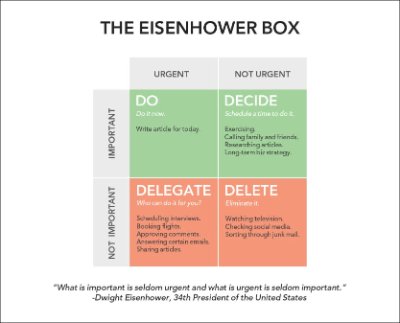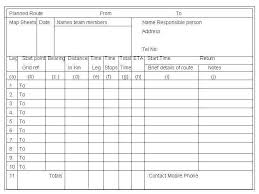Jun 28, 201
On October 30, 1935 at Wright Air Field in Dayton, Ohio the U.S. Army Air Corps held a competition to decide whether Boeing, Martin or Douglas would supply the next-generation long-range bomber to the Army. In fact, Boeing’s Model 299 (dubbed the ‘Flying Fortress’) was such a clear favorite that the ‘competition’ was seen by many as a formality.
Army commanders and manufacturing executives observed in awe as the huge, gleaming 299 taxied, took off, climbed to 300 feet, stalled, turned on one wing and crashed, exploding. The Army declared Douglas’s smaller design the winner and Boeing nearly went bankrupt.
But what does this have to do with what the military can teach us about Getting Things Done?
I’ll come back to the story of the Boeing 299 but let’s start by asking ‘why don’t we get things done?’ The obvious (but unhelpful) answer is because we either don’t start a task or we don’t finish it. We can get closer to the problem by asking ‘why’ again. We often do not start a task because it seems overwhelming and we often do not finish because we lose momentum or are simply trying to do too many things.
How can lessons from the military help overcome these challenges?
1. Set Goals and Priorities
You can’t do everything so you need to prioritize. The military approaches this by seeking a thorough understanding of the mission. By understanding what you need to accomplish and WHY you will be better placed to correctly prioritize your tasks and measure success.
Dwight Eisenhower lived an incredibly productive life and was considered to be an effective staff officer earlier in his military career. He is credited with inventing the ‘Eisenhower Box’ which reflected his belief that “what is important is seldom urgent and what is urgent is seldom important”. A clear understanding of your mission and some version of the ‘Eisenhower Box’ will help you spend your time more efficiently, a critical component of getting things done.
It’s just as important to know what NOT to do as well as what TO do.
2. Simplify. Break The Task Down Into Manageable Pieces.
Back to the Boeing 299 disaster. The investigation of the crash revealed that the 299 did not have a mechanical problem but had evolved to a level of complexity that was overwhelming for the pilot. Because of the 299’s superior range and payload capability, a small group continued to work to solve this problem; and the ultimate solution was simple. The team created a ‘checklist’ that broke down the many steps for taxiing, takeoff, flight and landing into a series of simple steps. In his description of this event in the New Yorker, Atul Gawande goes on to note that the Army ultimately ordered almost 13,000 Model 299’s, flying a total of 1.8 million miles without a single accident and, by then called the B-17, the 299 played a decisive role in the air campaign of the Second World War.
The military offers many examples of simplifying complex tasks and will even use this technique for tasks that might not be considered complex but that may be performed under great pressure. The use of route cards in navigation is a good example.
If a task is overwhelming, break it down into manageable chunks. The more discrete and measurable the better.
3. Start
I can imagine Yogi Berra saying something like ‘if you don’t start, you’ll never finish’. Getting your priorities straight and breaking down a large task into smaller tasks is critical but we may still find ourselves hesitating and time becomes our enemy. There will always be uncertainties but in almost every case the biggest risk is to do nothing. General George S. Patton said it well,
“A good battle plan that you act on today can be better than a perfect one tomorrow.”
Or, in the words of Navy Seal commander, Admiral William McRaven “start by making your bed” (if you have not seen his commencement speech at UT Austin you may need a little more context).
4. Make Lists and Keep Checking Things Off
‘Momentum’ is a key concept in military operations and is also critical in achieving your goals, particularly when others are involved. Momentum is achieved by moving quickly from the completion of one task to the next and an excellent way of achieving this is to make a list or lists – simple but true. A list is a great form of self discipline; not only does it help you start (because you’ve prioritized and broken down the tasks) but it also keeps you moving forward. The act of writing something down creates a higher level of commitment to a task. A hero of mine (and someone who often draws lessons and inspiration from the military), Richard Branson, loves lists and has a good list of why and how he makes lists (I know, a list of lists, ha).
It’s not just Santa who makes a list and checks it twice.
- If you adapt these tools and methods to help you prioritize, simplify, start and keep going you may be amazed by how much you get done.
What stops you from getting things done? What techniques do you use to overcome these?


